

CarExpert.com.au
The CarExpert team's favourite cars of 2025
19 Hours Ago
The Honda ZR-V is a right-sized car for those looking at a mid-size SUV. The e:HEV hybrid version is the pick, though it comes at a cost.
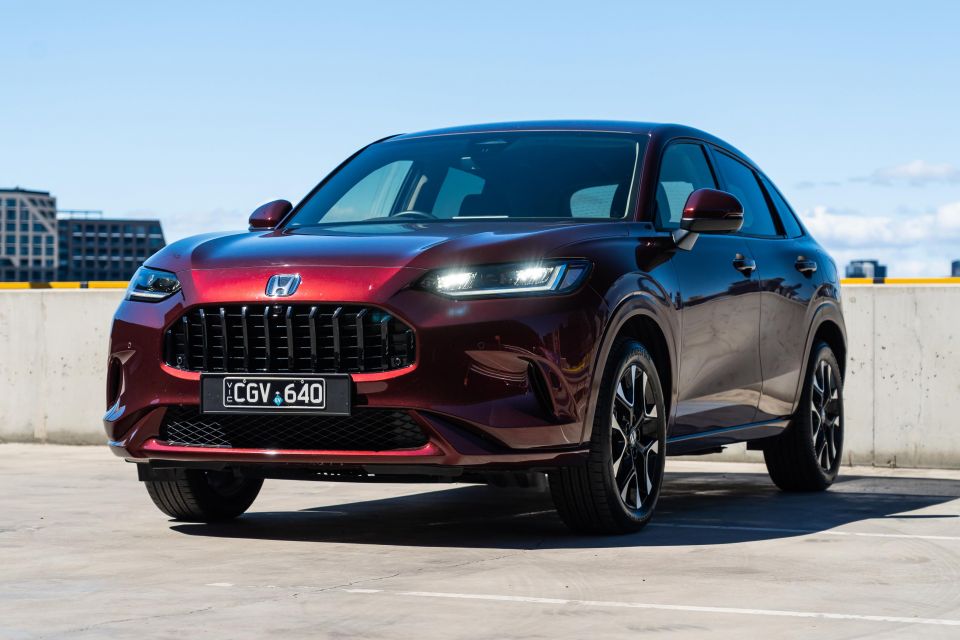


Quickly see how this car stacks up against its competition. Select any benchmark to see more details.
Where expert car reviews meet expert car buying – CarExpert gives you trusted advice, personalised service and real savings on your next new car.
The Honda ZR-V is the latest SUV addition to Honda’s local line-up, and forms as a rival to the likes of the Mazda CX-5 and Nissan Qashqai, among countless other small-to-medium crossovers and SUVs.
This five-seat mid-size SUV slots between the smaller four-seat HR-V and the larger five-/seven-seat CR-V in Honda’s range.
The ZR-V, also confusingly known as the HR-V in North America, is underpinned by the same platform as the current Civic, as well as the new CR-V.
On test here is the flagship variant offered in Australia, dubbed the 2024 Honda ZR-V e:HEV LX. It’s the only variant to receive the company’s 2.0-litre four-cylinder hybrid engine.
Is this hybrid the pick of the range? Read along to find out.

Honda ZR-V pricing:
Prices are drive-away
To see how the Honda ZR-V compares with its rivals, use our comparison tool.
Buy your new car without the stress. It's fast, simple and completely free.

Great service from Travis and team, second time I have used this business would not hesitate to recommend them to anyone
Craig C.
Purchased a Ford Ranger in Sunshine Coast, QLD
CarExpert helped Craig save thousands on his Ford Ranger, now let us save you on your next new car.
Find a dealWalking up and hopping into the Honda ZR-V is really easy as the seat hip height allows you to pivot in and out, rather than step up or down.
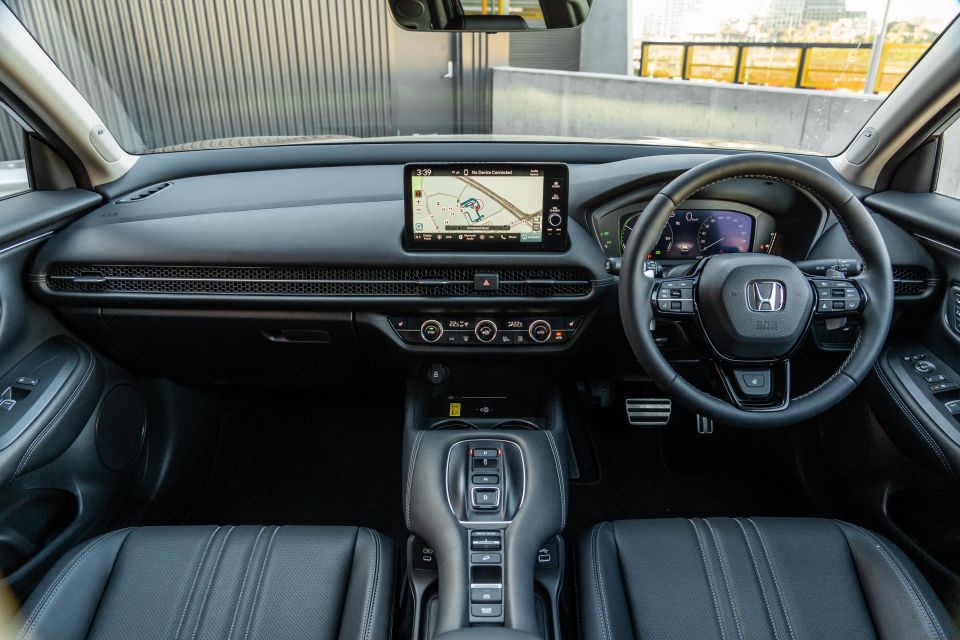
The flagship ZR-V comes standard with black leather-appointed upholstery which feels buttery soft. The front seats feel like lounge chairs and are extremely comfortable and squishy.
The driver’s seat has eight ways of electric adjustability, including plenty of thigh adjustment. One strange omission is there’s no adjustable lumbar support which meant my lower back started to ache a bit on longer drives.
Both front seats are heated, which is a handy feature to have on cool Melbourne mornings. The car even remembers what setting you had them on which can be both a blessing and a curse. Unfortunately ventilated seats aren’t available at all.
Ahead of the driver is leather-wrapped steering wheels that feels very nice in the hand. The rim is neither too thick or too thin – Goldilocks would approve.
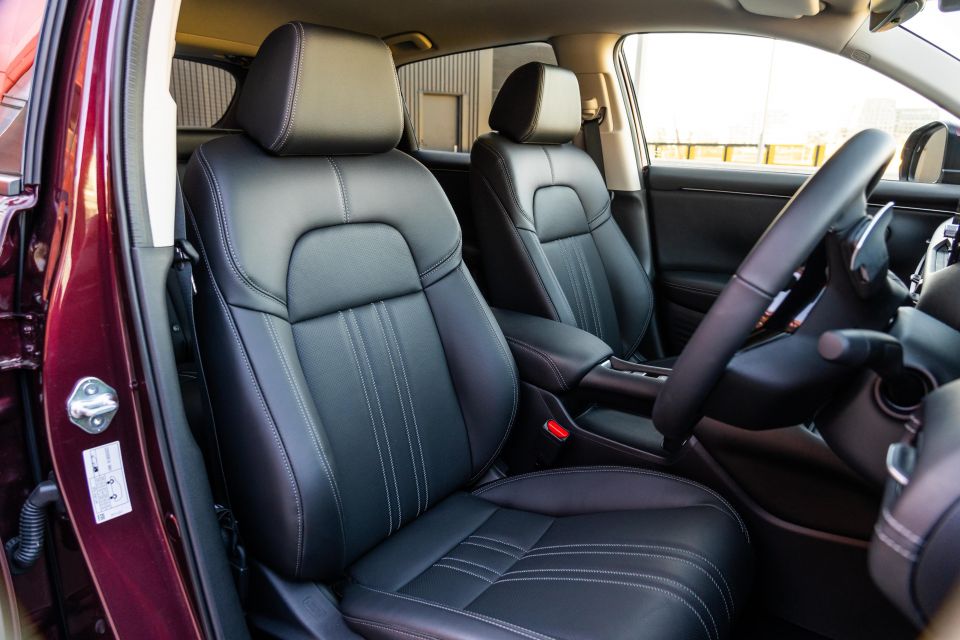
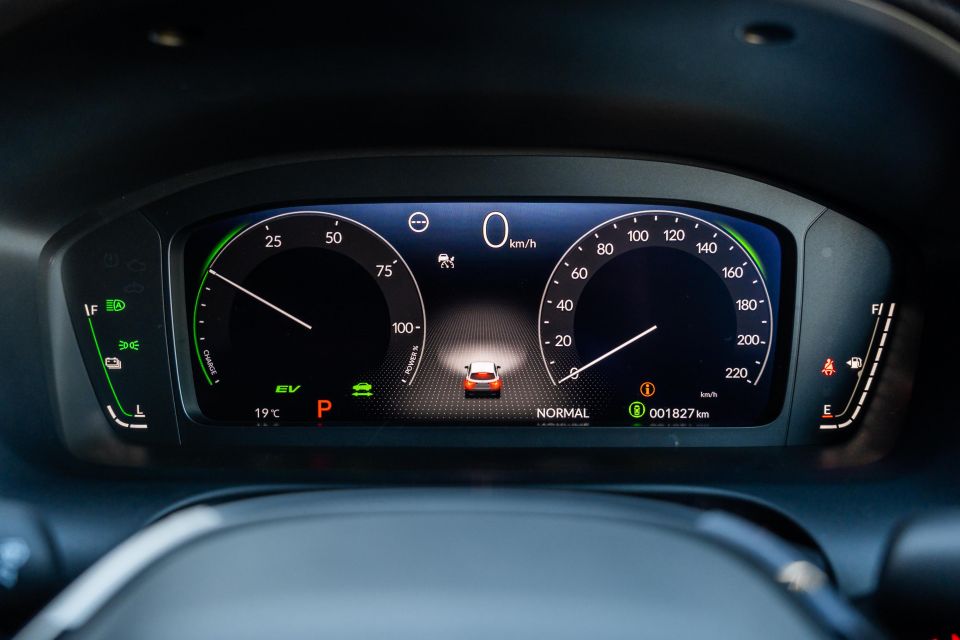
All the buttons and scroll wheels on the steering wheel have a satisfying and clicky action when interacted with. There aren’t any cheap-feeling materials here, nor any mushy buttons.
As standard there’s a 10.2-inch fully digital instrument cluster that doesn’t include any physical dials like other current Honda models. It offers high resolution and is easy to read.
The digital instrument cluster offers plenty of configuration, including a number of informative pages that can be cycled through by using the steering wheel buttons and scroll wheels.
My favourite part of the digital instrument cluster is there’s a small representation of the ZR-V down the bottom which reflects everything the car does. This includes when you brake, turn on the indicators, as well as switch on the headlights.
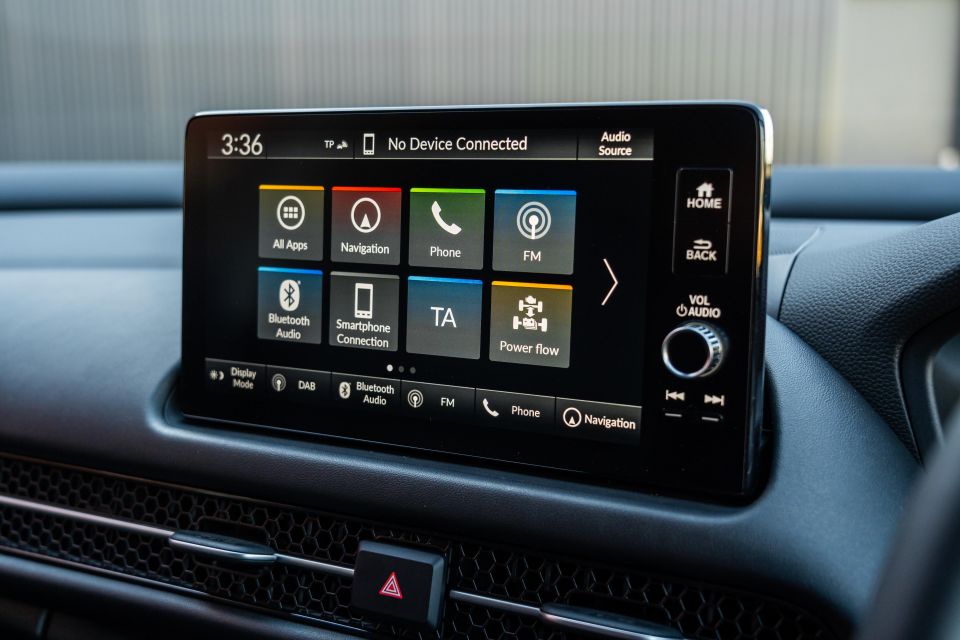
Moving across the 9.0-inch touchscreen infotainment system juts out from the dashboard and sits proudly on top of it. The display does look a little like a tablet that has been strapped to the dash.
Like the digital instrument cluster, the touchscreen looks high-resolution. The translucent anti-glare film that covers the display, however, can make some of the menus look a little grainy.
Despite this, swiping on and interacting with the touchscreen is really easy. It’s able to detect your finger really easily and because of the film there isn’t much resistance when you swipe.
There are two physical buttons for ‘Back’ and ‘Home’ on the side of the touchscreen, as well as a singular rotary dial for the volume. That’s really all you need and I’m thankful these aren’t integrated into the touchscreen.
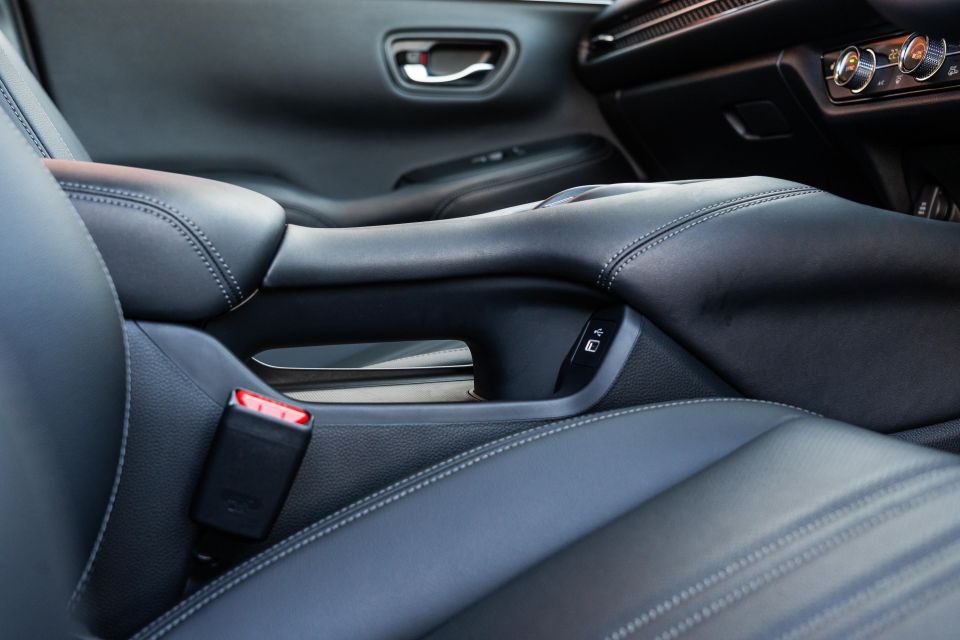
Both wired and wireless forms of Apple CarPlay and Android Auto are offered. For the majority of my time with our tester I used wireless CarPlay with my iPhone 15 Pro Max.
Unlike some vehicles that have wireless smartphone mirroring, I didn’t experience any dropouts whatsoever in the ZR-V. This is really strange as there are some typical dropout spots around Melbourne (CityLink near Dynon Road exit) that I drive through everyday.
Although wireless CarPlay worked like a dream it was hard to keep my phone’s battery topped up as the wireless charger only sometimes worked. This is mainly because my phone would slide off the pad every time I went around a corner or braked.
The fact the wireless charger only worked intermittently with my phone was fine on shorter trips, though on longer trips I had to plug my phone to a USB port.
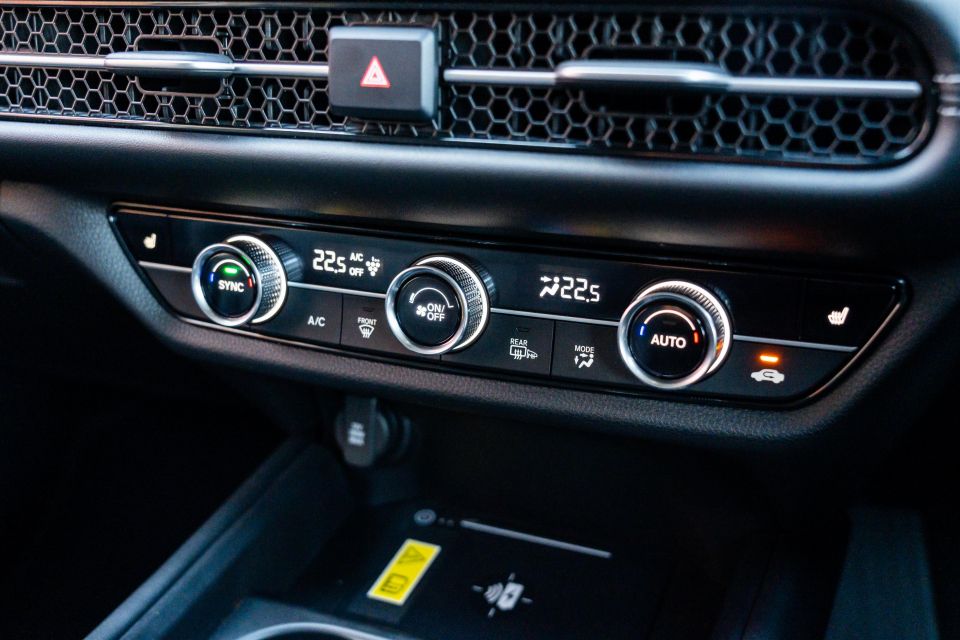
Speaking of USB ports, they aren’t in a typical location. Instead they are on each side of the centre console down on a lower level – there’s also a small shelf under the electronic handbrake where you can sit your phone.
Looking around the cabin there are plenty of soft-touch materials, which is good to see in a mainstream vehicle. You really have to search to find any sort of harder plastic.
Like the Civic and new CR-V, the ZR-V has mesh running across the dashboard that houses some climate control vents. This is a stylish touch and looks premium-pushing.
I’m thankful the ZR-V has physical knobs and buttons for its dual-zone climate control setup. All the hardware is really satisfying to use and provides a clicky feedback.
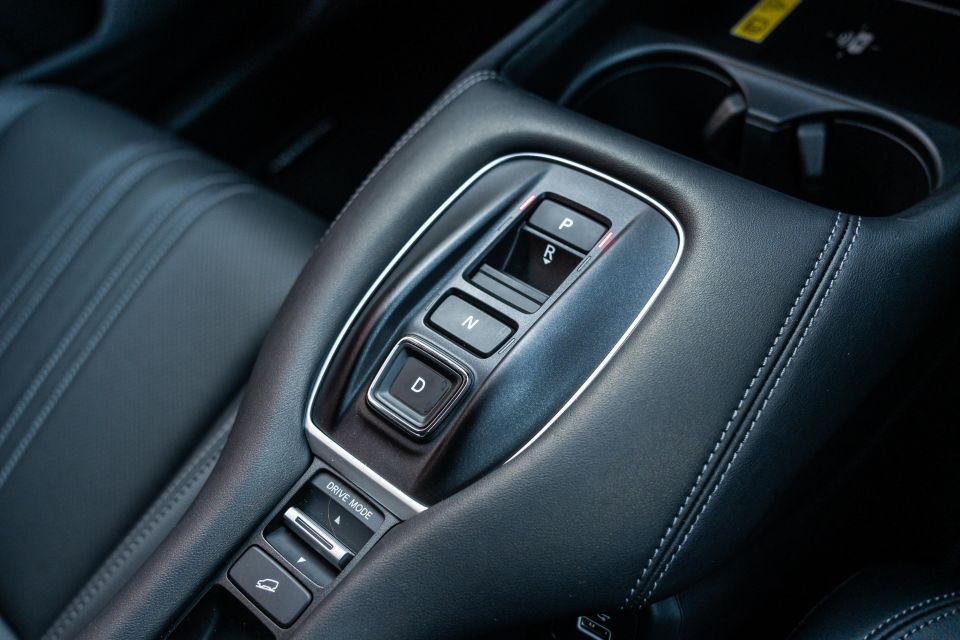
Unique to the ZR-V e:HEV LX is its shift-by-wire gear selector. The rest of the range receives a typical leather-wrapped gear knob.
The shift-by-wire gear selector has push buttons for ‘Park’, ‘Neutral’ and ‘Drive’, however for ‘Reverse’ you need to push back on a switch. It can take a bit to get used to, but once you’re acquainted it’s rather intuitive.
As standard there’s a 12-speaker Bose sound system that provides really deep, heavy and thumping bass. This is a pretty good sound system given its price point and its rivals.
Moving to the second row there’s surprisingly more room than you think. At a leggy 182cm I had plenty of leg, head, shoulder and toe room behind my driving position.
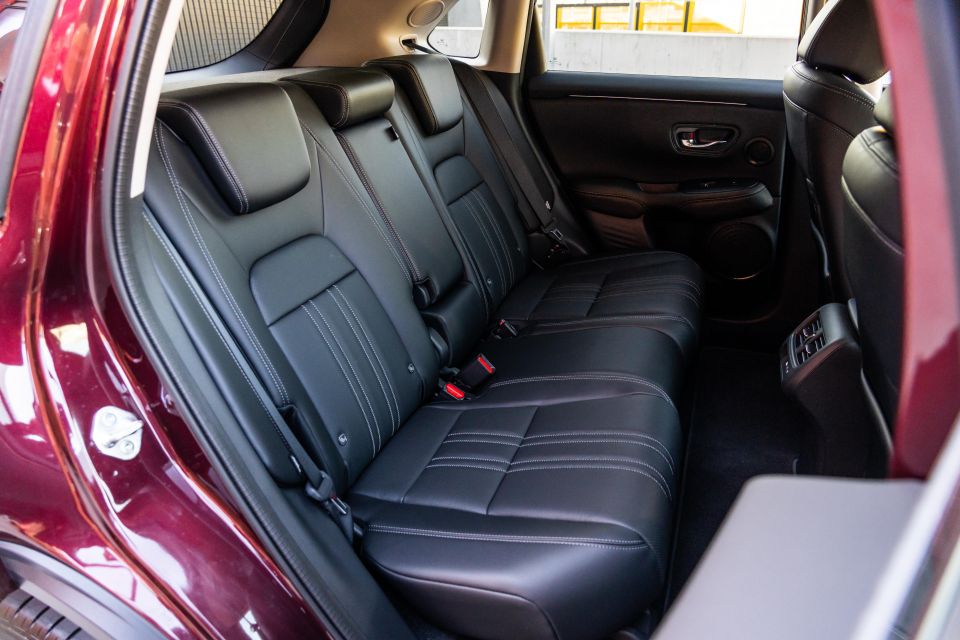
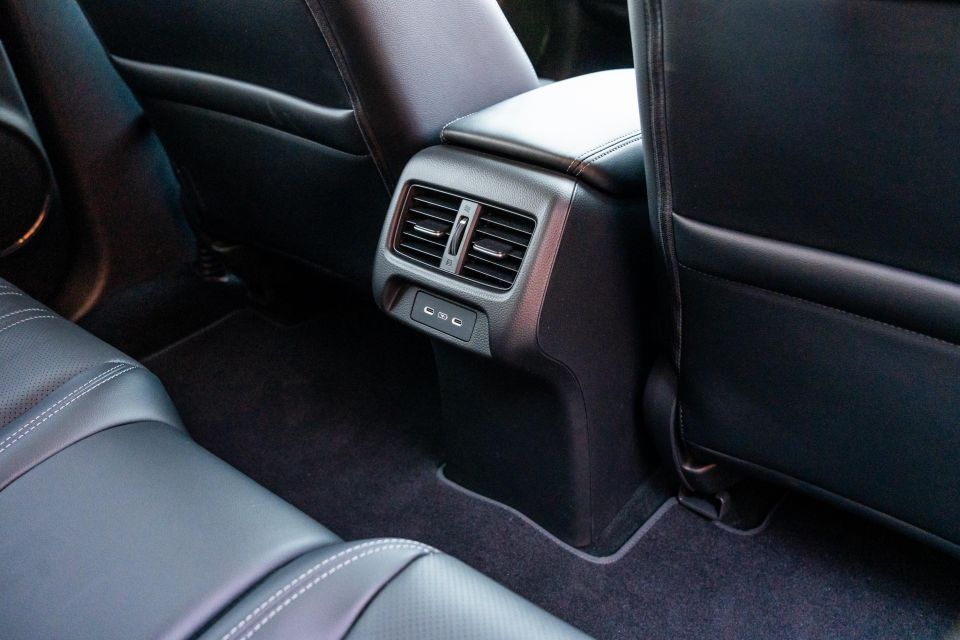
What makes this even better is the second-row bench seat is just as squishy and comfortable as the front seats. They also recline a fair way which makes me feel want to take a nap just thinking of it.
There’s only a small transmission hump on the floor of the second row, which means the person sitting in the middle won’t have to fight for foot space as much. Putting three adults in the back of the ZR-V might get a bit tight width-wise however.
In terms of second-row amenities, there are heated outboard seats, centre-console mounted air vents, USB ports, seat back map pockets, and a fold-down armrest with cupholders.
There are also the requisite ISOFIX points on the outboard seats, as well as top-tether points for attaching child seats.
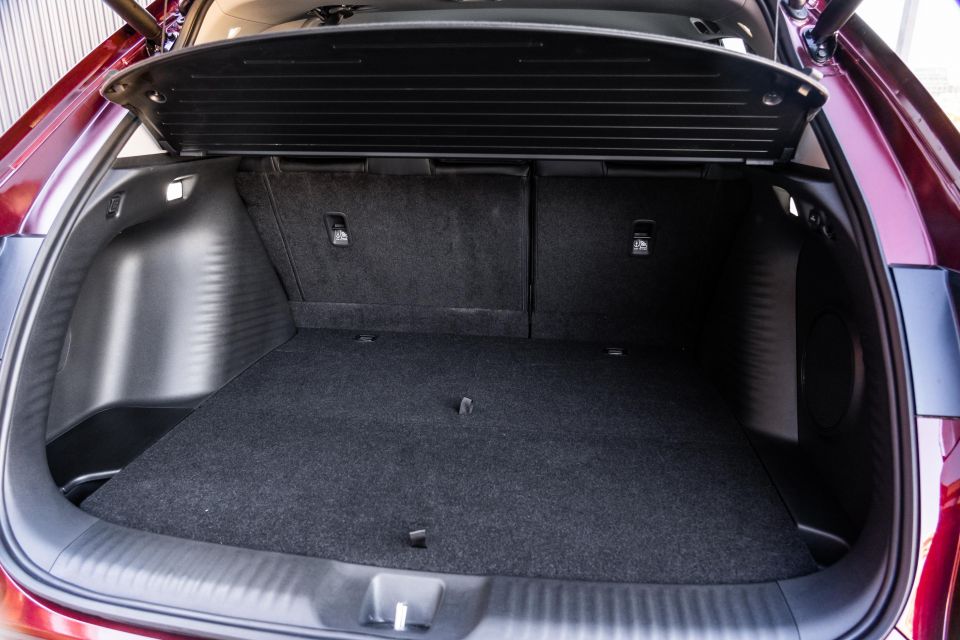
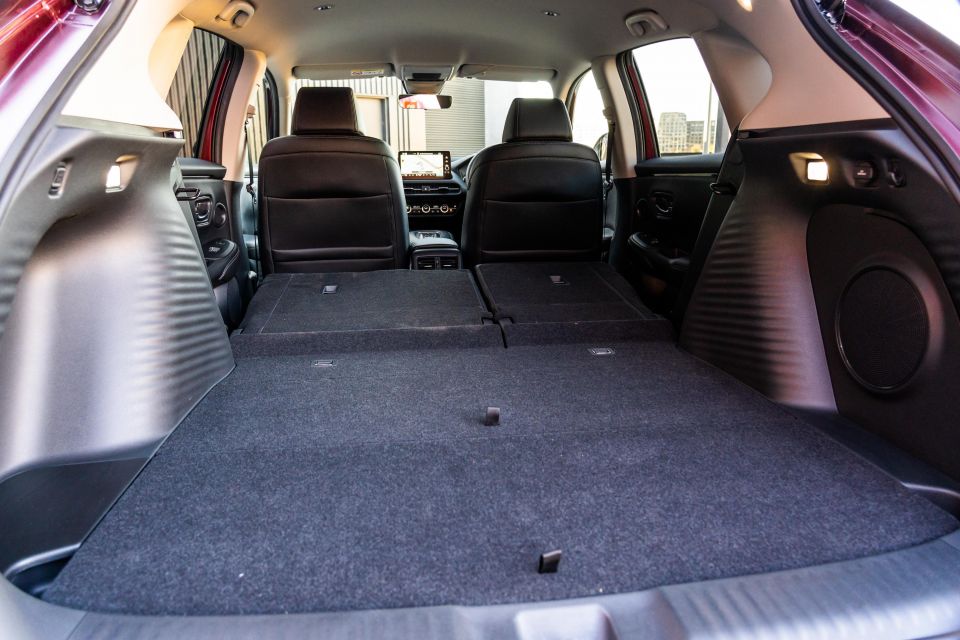
At the back of the ZR-V e:HEV LX there’s a powered tailgate with a hands-free opening function which is incredibly handy if you’ve got your hands full. There’s also a walk-away closing and locking function.
Honda quotes an official boot capacity figure of 370 litres, which doesn’t sound like that much on paper, but in reality there’s enough space.
This figure also includes a nifty little underfloor section which is big enough for just a few odds and ends. Folding down the rear seats expands the boot space to 866 litres (measured to the window line).
There are plenty of hooks in the boot to ensure bags don’t fall over, plus the boot floor can be used to create a divider.
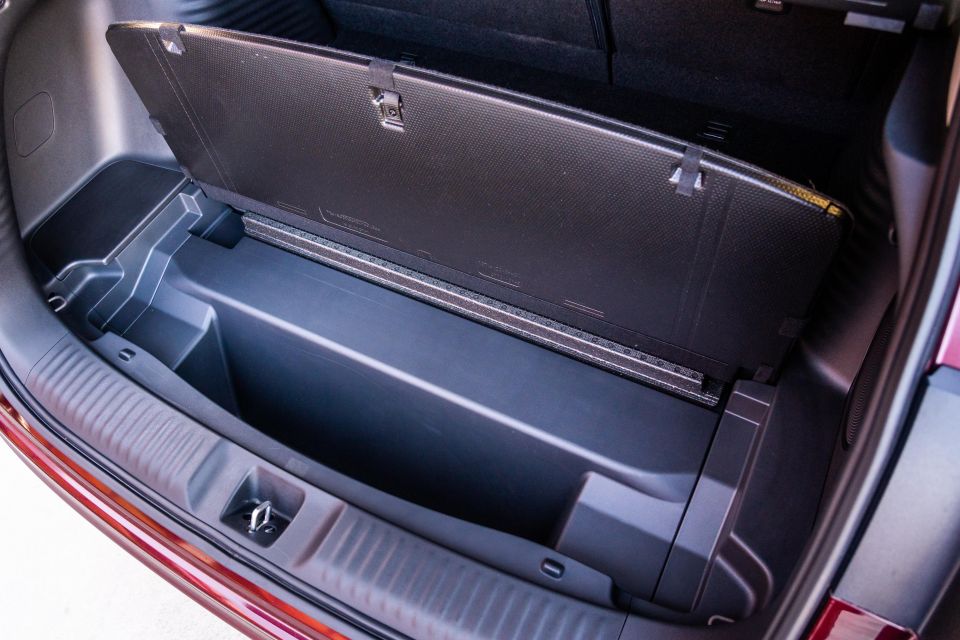
Lastly, the ZR-V e:HEV LX doesn’t come with a spare tyre of any form – instead it receives a tyre repair kit.
It’s not uncommon for hybrid vehicles to not have a spare tyre, but it’s something to keep in mind if you do a fair bit of travelling in rural and regional areas.
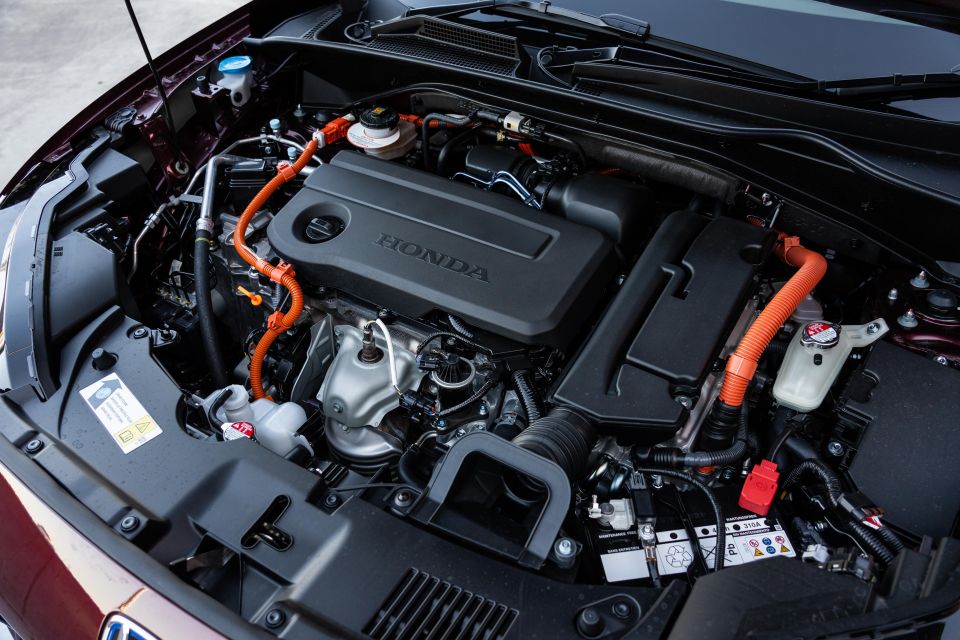
| Model | Honda ZR-V e:HEV LX |
|---|---|
| Engine | 2.0-litre 4cyl petrol |
| Electric motors | 2 x electric motors |
| Engine power | 135kW |
| Engine torque | 315Nm |
| Transmission | Electronic continuously variable transmission (e-CVT) |
| Driven wheels | Front-wheel drive |
| Weight | 1586kg (kerb) |
| Fuel economy (claim) | 5.0 litres per 100km |
| Fuel economy (observed) | 4.3 litres per 100km (230km urban-heavy) |
| Fuel tank size | 57 litres |
| Fuel requirement | 91 RON |
To see how the Honda ZR-V compares with its rivals, use our comparison tool.
Starting up the Honda ZR-V e:HEV LX is largely a silent affair with a press of the start button causing a chime to play when the car is ready to drive.

The ZR-V will typically start up in EV mode unless the petrol engine is cold. In this case the engine will turn on and idle away to get the fluids moving around and warming up. Once the engine has warmed up a tad it usually turns off.
Something that’s really surprising about this car is, unlike some Toyota hybrids, it will really lean on its electric motors to do the majority of the driving. This is a credit to how powerful the electric motors are.
At low speeds the electric motors will be used as much as possible, provided there’s enough battery charge and you don’t stamp on the accelerator. This is part of the reason why I was able to achieve a fantastic average fuel economy figure of 4.3 litres per 100km during my loan period as I spent the majority of it stuck in city traffic.
If needed, the 2.0-litre four-cylinder petrol engine will switch on to provide assistance and/or charge the battery pack. When this happens there’s thankfully no lull in power delivery.
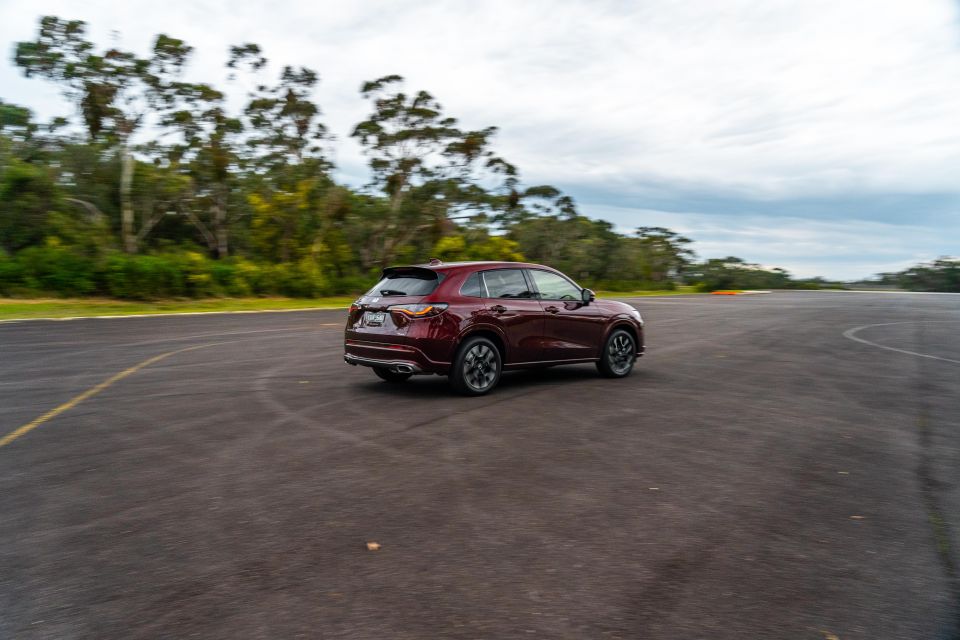
Where expert car reviews meet expert car buying – CarExpert gives you trusted advice, personalised service and real savings on your next new car.
The petrol engine usually turns on quietly, though sometimes it can get a little droney under acceleration. This can be put down in part to the car’s electronic continuously variable transmission (e-CVT). It’s noticeably less buzzy than Toyota hybrids however.
Acceleration in the ZR-V e:HEV LX is fine, but you won’t blown away by any means. You’ll be keeping up with traffic at the lights or pulling ahead if you prod the accelerator a bit harder.
There is a ‘Sport’ mode that can be triggered by a switch near the electronic park brake which makes the car feel a bit more rapid from a standstill. It switches on the petrol engine quicker and also works with the e-CVT to create simulated gear changes.
Thanks in part to light steering at low speeds, the ZR-V is really to manoeuvre in tight spots like carparks. As standard there’s front and rear parking sensors, as well as surround-view camera that has good image quality.
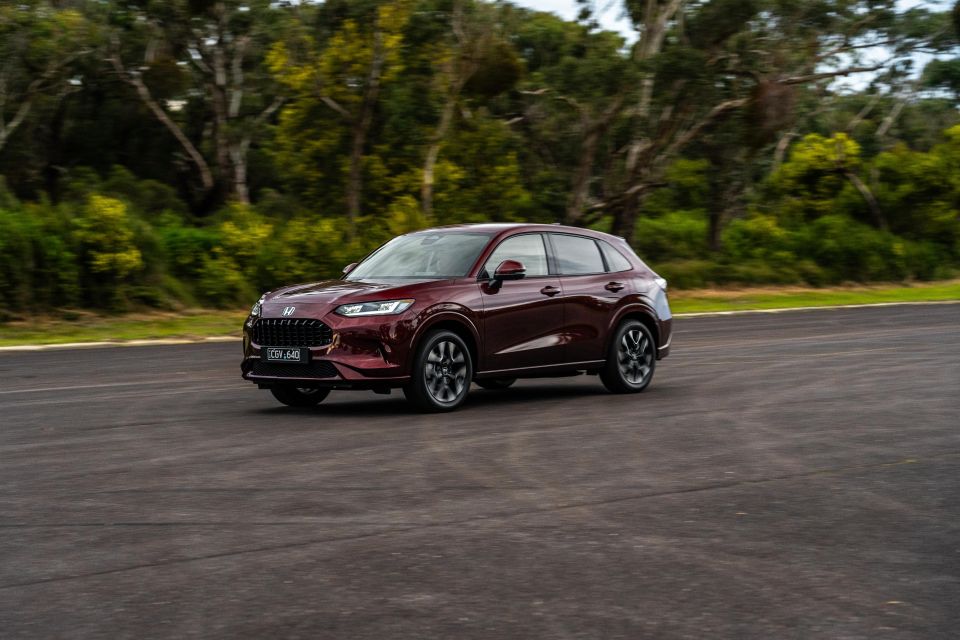
The latter of these features naturally activates when you select reverse, but can also be turned on at low speeds by pushing the end of the wiper stalk. This can be helpful if you’re trying to make sure you don’t kerb a wheel.
Around town the car does have a tiny bit of body roll but that’s to be expected given it’s a crossover with a higher centre of gravity than a sedan or hatchback.
The suspension setup is generally really compliant, however over certain harsh urban road imperfections at low speeds the car can crash a bit. At higher speeds on the flip side virtually every single bump is ironed out.
Building up speed in the ZR-V e:HEV comes easily enough, though it will use the petrol engine to assist in getting to cruising speeds. If you’re travelling up a hill for example, this is when the petrol engine can get a little droney in the cabin.
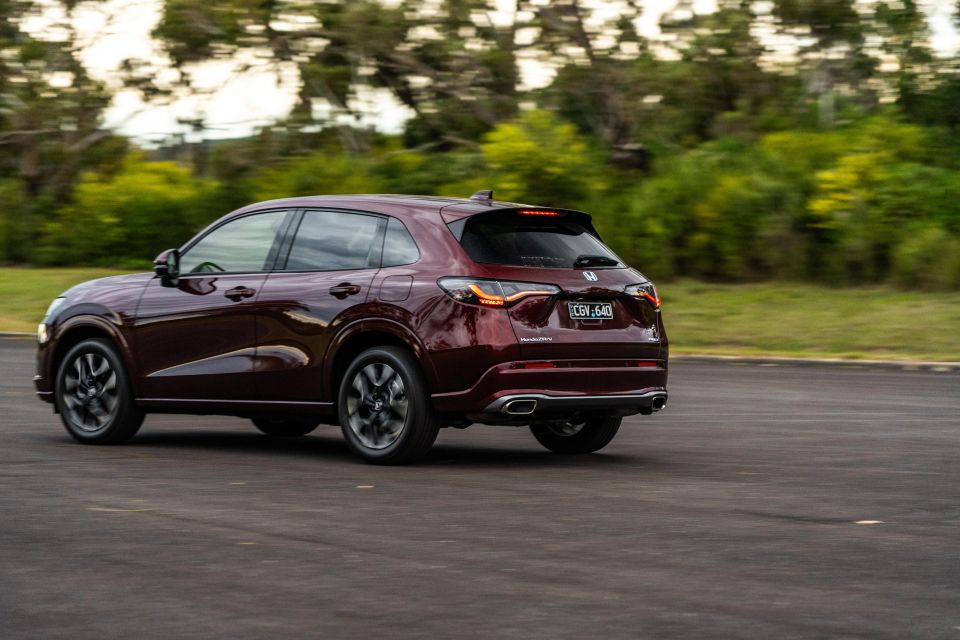
Once you’re at speed however the car will switch the petrol engine off, provided it has enough battery charge. Surprisingly, the ZR-V will happily cruise along flat roads at 100km/h in EV mode if it can.
All of this results in a whisper-quiet driving experience at all speeds. The ZR-V also comes with an acoustic windscreen which helps to further block out ambient noise.
Like virtually all hybrids, this car has regenerative braking system that helps feed energy back into the battery pack. In its standard mode it helps to negate the lack of engine braking that typically happens in a car mated to a CVT.
Behind the steering wheel there are a set of paddle shifters that would typically change the gears, but in this case change the amount of regenerative braking provided without pressing the brake pedal. This is only for a limited time however, with it shifting back to its default mode after a while.

There’s no one-pedal driving mode available in this car, which means you need to press the brake pedal to come to a complete stop.
In everyday driving in urban environments where there is lots of stops and starts, you’d be surprised at how quickly the ZR-V e:HEV LX’s battery pack charges up. This in turn results in more EV driving.
On the safety front, the adaptive cruise control system generally works fine, though it loves to slow down when it detects a car ahead of you. The car does like to be a little on the cautious side and leave a generous gap, which is fine, though other cars will jump in ahead of you.
Lane departure warning can also be a little dramatic at points. It largely works as intended, but on offramps and other meandering roads it would try to steer you back into the lane although you never left it in the first place.
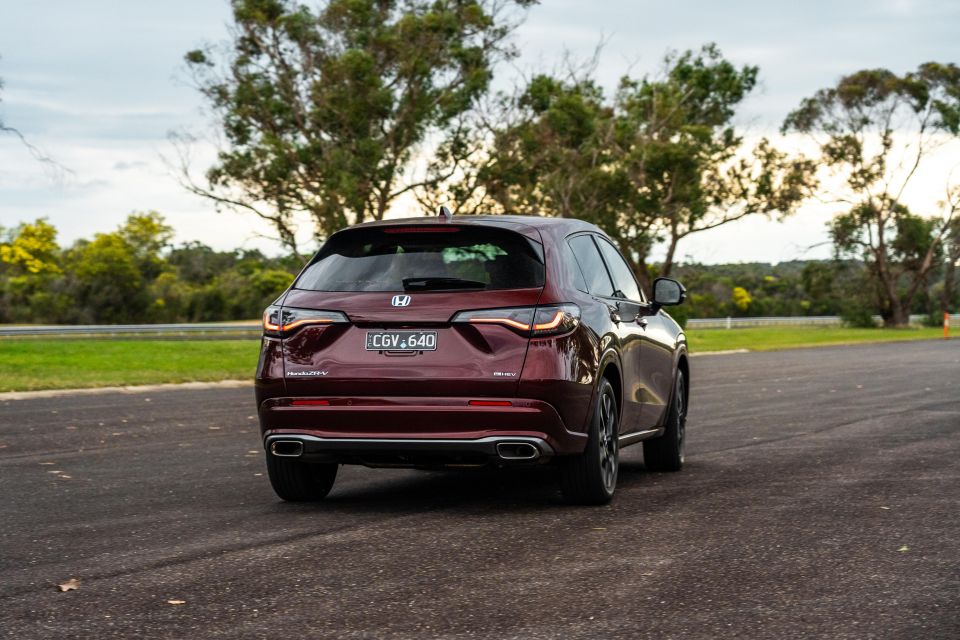
Despite this the lane-centring function is pretty good at keeping the car within the lane. It does gentle tugs on the steering wheel and is best kept for well-marked highways where driving can become monotonous.
The last thing I’ll mention is the entire ZR-V range has adaptive LED headlights as standard. These types of headlights are fantastic when you’re driving rural and regional roads in pitch darkness as you don’t need to dip your high-beams and can instead worry about what else might stray onto the road ahead.
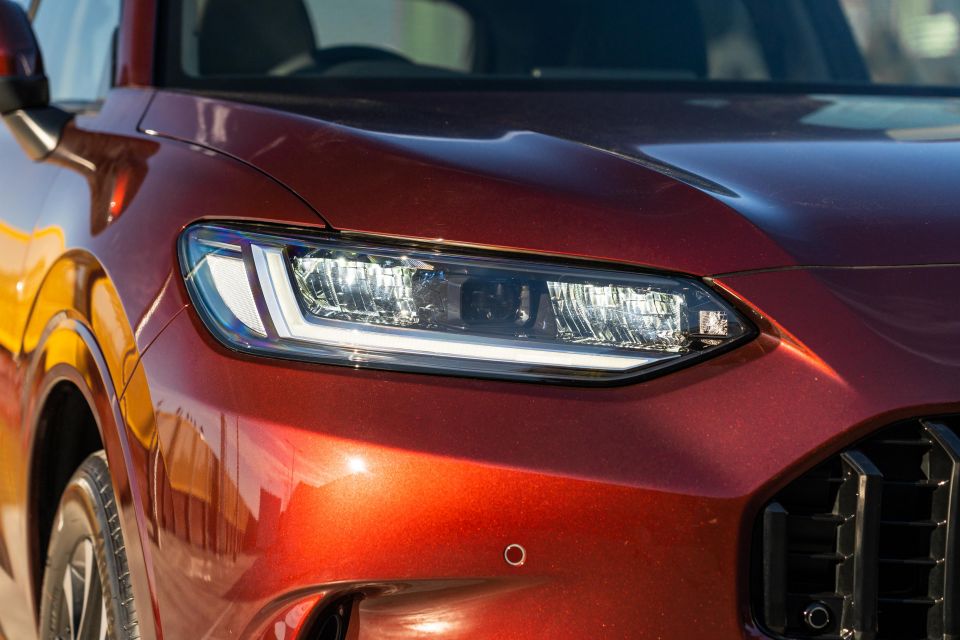

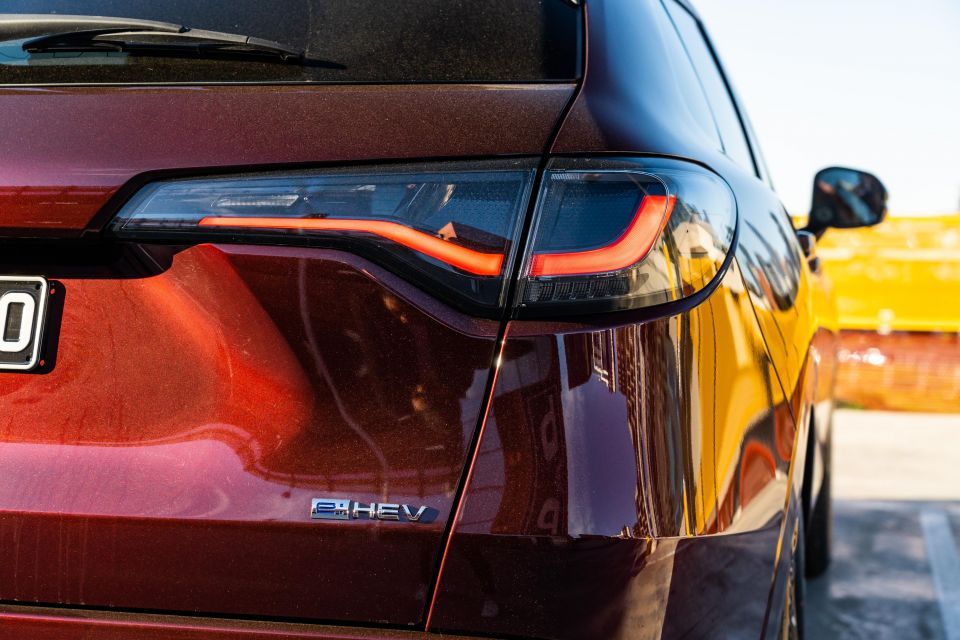

ZR-V VTi X highlights:
ZR-V VTi L adds:
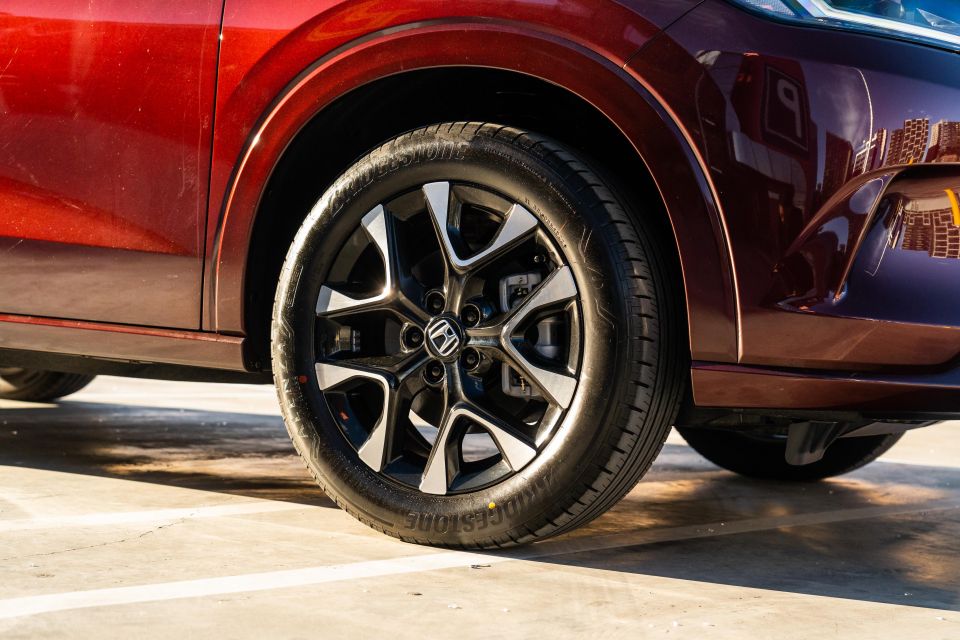

ZR-V VTi LX adds:
ZR-V e:HEV LX adds:
The Honda ZR-V has yet to be tested by ANCAP, though hybrid models received a four-star rating from sister authority Euro NCAP.
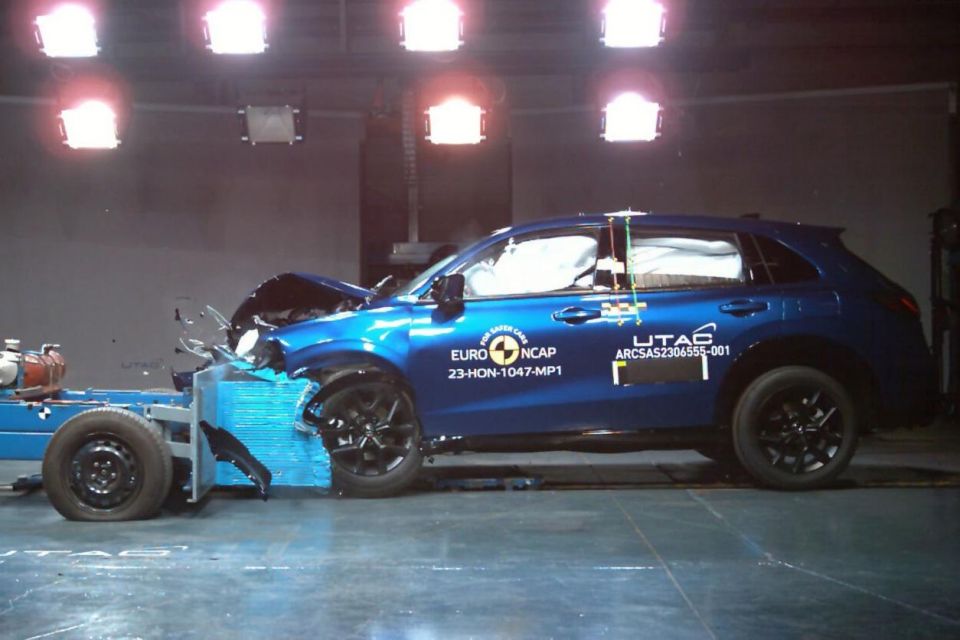
Standard safety equipment includes:
VTi LX and above get blind-spot monitoring, rear cross-traffic alert and a surround-view camera.
All Honda ZR-V models are backed by a five-year, unlimited-kilometre warranty.
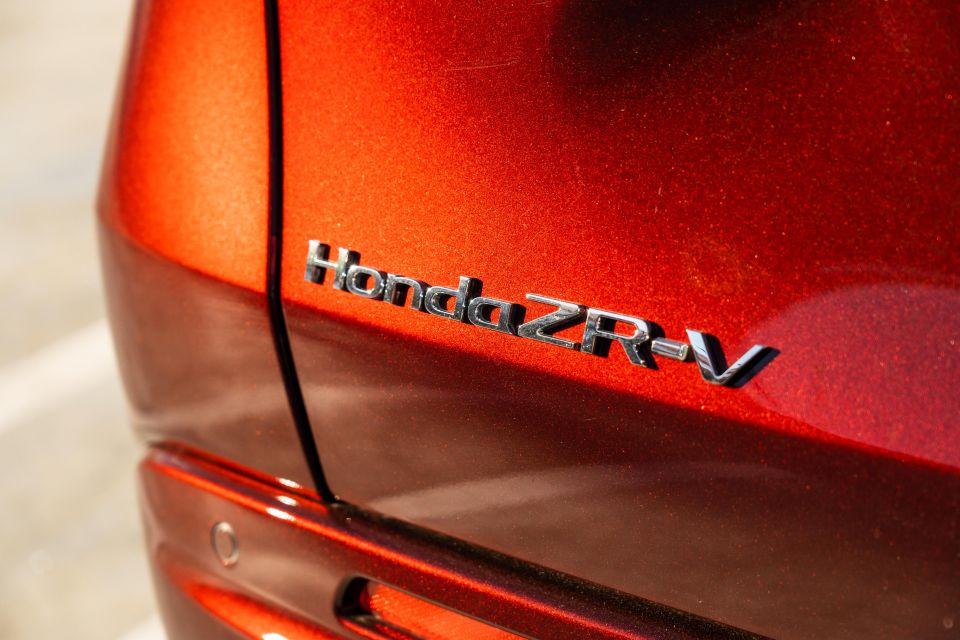
For a limited-time however Honda is offering a seven-year, unlimited-kilometre warranty with seven years of premium roadside assist.
Logbook servicing is required every 12 months or 10,000km, whichever comes first. The first five services are capped at $199 each.
If Goldilocks was to pick a Honda SUV, she would likely pick the ZR-V.

This mid-size SUV offers quite a number of premium and plush-feeling interior finishes, as well as plenty of standard equipment, all wrapped up in a package that includes a sought-after elevated driving position.
The 2.0-litre four-cylinder hybrid powertrain tested here really is the pick of the engines as it’s refined and whisper quiet for the most part, as well as incredibly efficient. There aren’t many cars I can drive around for 230km and only have a single bar of the fuel gauge disappear.
I do wish Honda would introduce an entry-level or mid-spec version of the ZR-V with the hybrid powertrain as reserving it for the top-spec model means you’re dishing out a fair chunk of change for the privilege of saving petrol.

Click the images for the full gallery
BUY: Honda ZR-V MORE: Everything Honda ZR-V
Where expert car reviews meet expert car buying – CarExpert gives you trusted advice, personalised service and real savings on your next new car.
Jack Quick is an automotive journalist based in Melbourne. Jack studied journalism and photography at Deakin University in Burwood, and previously represented the university in dance nationally. In his spare time, he loves to pump Charli XCX and play a bit of Grand Theft Auto. He’s also the proud owner of a blue, manual 2020 Suzuki Jimny.


CarExpert.com.au
19 Hours Ago


Damion Smy
1 Day Ago


Damion Smy
2 Days Ago


Josh Nevett
2 Days Ago


Max Davies
2 Days Ago


Ben Zachariah
3 Days Ago